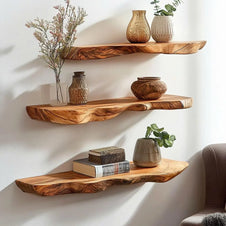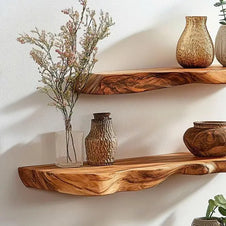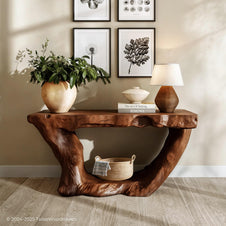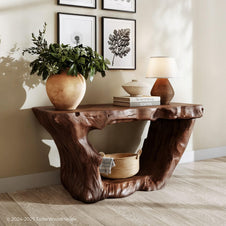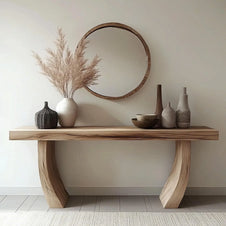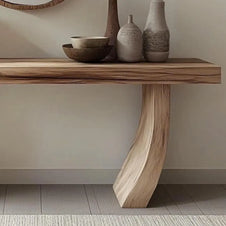In modern homes, a floating bedside table is a popular choice for creating a clean, minimalist look. This style of furniture makes a room feel more open and spacious by keeping the floor clear. While you can buy a floating nightstand, building a custom diy floating bedside table is a project that allows you to get the perfect size, style, and finish for your space. With a clear plan and the right tools, this project is very achievable for most people, even if you’re a beginner. This detailed guide will walk you through every step of building a functional and beautiful diy floating bedside table that you can proudly say you made yourself.
Project Overview
This guide will walk you through building a diy floating bedside table with a sleek box-and-drawer design. This particular diy floating bedside table offers the perfect balance of open space and concealed storage, giving you a minimalist look with maximum functionality. Here are several benefits of the project:
-
Space-Saving: By mounting the nightstand to the wall, you free up floor space, which makes the room feel larger and is great for small bedrooms. It also makes cleaning the floor much easier.
-
Customizable: Unlike store-bought furniture, you get to choose everything about this diy floating bedside table. You can pick the type of wood, the exact dimensions, and the color or stain that will perfectly match your decor.
-
Secure Installation: This project will teach you how to properly mount your finished diy floating bedside table to the wall, ensuring it's stable and safe for everyday use.

A floating nightstand with a drawer is a great choice for balancing style with storage. You get the clean, minimalist lines of a floating shelf and a convenient drawer to keep your essentials out of sight.
Materials & Tools for Your DIY Floating Bedside Table
Gathering all your materials and tools before you begin is a crucial first step. This will ensure a more efficient and professional building process. Here is a list of what you'll need for your diy floating bedside table project:
-
Some walnut boards and poplar boards
-
Wood screws
-
A set of drawer slides
-
A robust mounting system (such as a French cleat)
-
Wood glue
-
Sandpaper in various grits (e.g., 120, 220),
-
Wood stain or paint
-
A clear protective topcoat like polyurethane
-
A tape measure
-
A pencil
-
A square
-
A circular saw
-
A miter saw
-
Pocket Hole Jig
-
A drill with a set of drill bits
-
Clamps
-
Wood scews
-
Pocket hole screws
A Step-by-Step Guide to Build DIY Floating Bedside Table
This is the core of the project. Follow these steps carefully to build your new diy floating bedside table.
Step 1: Planning and Making Your Cuts
First, decide on the final size for your diy floating bedside table. A good size is about 18 inches long, 12 inches deep, and 8 inches high. Based on these dimensions, create a detailed cut list for each piece: a top, a bottom, two sides, and a back. A properly measured cut list is the foundation for a successful diy floating bedside table. Once your list is ready, use your saw to carefully cut all the pieces from your wood. For a professional finish, make clean and straight cuts.

Before you start your project, we recommend you find some inspiration from floating nightstand designs (like this one). Then, measure and create a model out of cardboard to help you visualize it.
Step 2: Assembling the Outer Box
Now, you'll assemble the main frame of your diy floating bedside table.
-
Apply a thin layer of wood glue to the edges of the pieces you’re joining.
-
Use clamps to hold the pieces together and ensure the corners are perfectly square.
-
Drill pilot holes to prevent the wood from splitting, then drive in wood screws to create strong, secure joints.
-
Clean away any excess glue with a damp cloth before it dries. Repeat this until your diy floating bedside table box is fully assembled.
Step 3: Building the Drawer Box
The drawer is the key to this diy floating bedside table design. You’ll build a simple box that will fit inside the main frame.
-
Measure the opening of your nightstand and subtract a small amount (about 1/2 inch) to allow room for the drawer slides.
-
Cut four pieces of plywood to create the sides of the drawer box.
-
Use wood glue and screws to assemble the drawer box, making sure it’s perfectly square. This is a critical step for a smoothly functioning diy floating bedside table.
Step 4: Installing Drawer Slides
Drawer slides can seem tricky, but they are easy to install if you follow the directions.
-
Separate the two parts of the drawer slide.
-
Attach one part to the inside of your nightstand box. Use a ruler to make sure it is perfectly straight and level. This is a very important part of building your diy floating bedside table.
-
Attach the other part of the slide to the outside of your drawer box.
-
Carefully slide the drawer into the main box to test that it moves smoothly.
Step 5: Attaching the Drawer Face
The drawer face is the front panel that gives your diy floating bedside table a clean look.
-
Carefully align the drawer face over the drawer box, making sure the reveal (the small gap around the edges) is even.
-
Hold the drawer face in place with painter's tape or a few small clamps.
-
From the inside of the drawer, drive in screws to secure the face to the drawer box. Once secured, you have a beautiful finished diy floating bedside table.
Step 6: Sanding and Finishing
This final step is what gives your diy floating bedside table a professional look.
-
Use wood filler to cover all screw holes and any small gaps. Let it dry completely.
-
Sand the entire piece, starting with a medium-grit sandpaper (e.g., 120) to smooth out rough spots, then finish with a fine-grit paper (e.g., 220) for a silky-smooth feel.
-
Apply your chosen stain or paint, following the product's directions for the best results.
-
Finish with a protective topcoat to ensure your diy floating bedside table is durable and long-lasting.

Following these detailed instructions, you can easily make a DIY floating bedside table that is as stunning as this piece.
How to Securely Mount Your DIY Floating Bedside Table
A secure mount is the most critical part of this project, ensuring your diy floating bedside table stays safely on the wall. We recommend using a French cleat system, which provides a strong, reliable hold for your finished diy floating bedside table. Moreover, If you're unsure about where to hang your floating nightstand, Homemore's article is a great resource.
Here's how to securely install your diy floating bedside table:
-
Find the wall studs and mark a level line where you want the bottom of the nightstand to sit.
-
Attach one piece of the cleat to the wall along the line, screwing directly into the studs.
-
Attach the other half of the cleat to the back of the nightstand.
-
Carefully hook the nightstand onto the wall cleat to complete your project.

Once your DIY floating bedside table is mounted, you can style it with simple pieces such as a plant, a candle, or books, just like this one.
FAQs about DIY Floating Bedside Table
How much weight can a diy floating bedside table hold?
The weight capacity depends entirely on the mounting system and how it is installed. A diy floating bedside table mounted into wall studs with a strong French cleat can easily hold up to 50 pounds or more, which is more than enough for everyday use.
How can I hide charging cords and other wires?
To keep the clean look of your DIY floating bedside table, you can drill a small hole in the back of the nightstand to run cords through. You can also use adhesive clips on the underside of the nightstand to neatly guide the wires along the wall and down to the outlet.
How do I decorate a floating bedside table?
Since the surface is smaller, less is more. To keep the area clean, consider a wall-mounted reading light instead of a lamp. Curate just a few essential items, such as a small plant, a single book, and a coaster. This keeps the space functional and visually appealing.
How do I clean and maintain my new floating bedside table?
Maintenance is simple! To clean your DIY floating bedside table, just wipe it down with a damp cloth. Harsh chemical cleaners can damage the finish, so it's best to avoid them. A good clear sealant will help protect the wood from scratches and spills, so it stays looking new.
Conclusion
Building a custom diy floating bedside table is a project that combines practicality with personal style. The process of creating this modern piece of furniture from scratch is a satisfying and rewarding experience. From planning to the final finish, every step is a chance to learn new skills and create something unique for your home. With a good plan and a little effort, a beautiful and functional diy floating bedside table is well within your reach. We hope this guide helps you feel confident and ready to tackle this fun project and enjoy the feeling of having a stunning diy floating bedside table that is completely your own.

